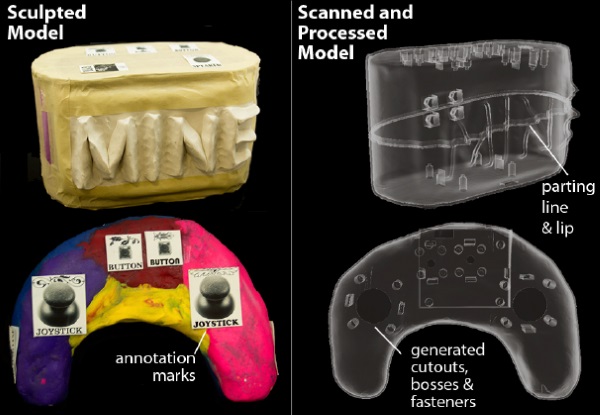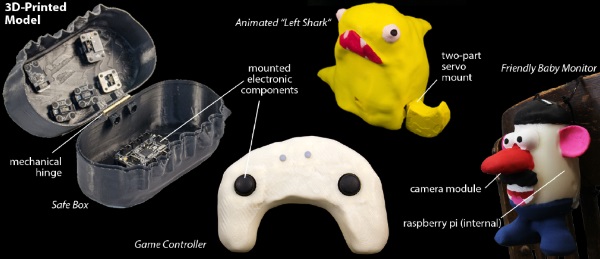As the industry of 3D printing continues to expand into the consumer market, accessibility and easy use are two key components that companies are focusing on when developing desktop 3D printers and 3D scanning devices. Yet there remains a divide between serious Makers and beginners when it comes to 3D modeling, which imposes pretty strict limitations on those without experience with CAD modeling. That’s where Makers’ Marks is coming in to save the day, offering advanced 3D modeling services to novice 3D enthusiasts who can’t quite bring their ideas to the 3D ecosystem on their own. The goal of Makers’ Marks isn’t just to assist with 3D modeling; in fact, they actually want to help inexperienced designers to model objects that are functional and may or may not need electronic or other mechanical components.

The complete project is detailed in “Makers’ Marks: Physical Markup for Designing and Fabricating Functional Objects” (PDF), published by UC Berkeley EECS and Stanford University researchers Valkyrie Savage, Sean Follmer, Jingyi Li, and Bjorn Hartmann. In their report, Savage, et al. explain that the system starts with the user, who is asked to sculpt their desired 3D model out of clay or some other similar material, and add stickers to symbolize where non-printed components would be implemented into the design. This way, Makers’ Marks can capture the geometric model along with the functional properties of the proposed model.
Makers’ Mark uses an example of a teenage Maker who wishes to 3D print a safe box that only opens with an inputted code. All the teenager needs to do to turn this idea into a functional 3D printed object is create a cardboard model of the box, place stickers where the electronic and mechanical components are needed, and the Makers’ Marks user interface takes care of the rest. The model of the safe box is 3D scanned for its geometric properties and planned function, and suddenly a 3D printed safe box with additional security components is born.
Aside from the safe box example, Makers’ Marks have also used their 3D modeling process to create functional and personalized video game controllers, an animated Left Shark toy, and a 3D printed baby monitor with electronic components, such as a camera and Raspberry Pi. After modeling and marking the areas where non-printed components will be eventually added to the model, Makers’ Marks will fabricate the model with the necessary support material and allow the user to 3D print their creation.
By taking a real-world physical model and transferring it to the CAD universe, Makers’ Marks is helping inexperienced 3D designers to bring their ideas to the 3D printing platform. Acting as the middleman between an idea and the actual production of the idea, Makers’ Marks is taking care of the difficult modeling process in order to allow anyone to feel like a true Maker.



Leave A Comment